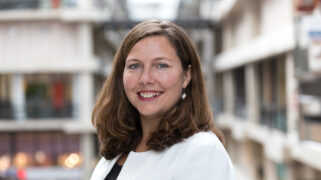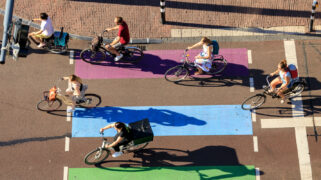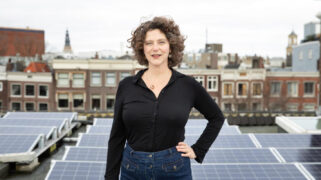On social innovation expedition with fifty Finnish citymakers: eight important lessons
Kennisland is looking back on an enervating and interesting first week of May. We took a group of fifty Finnish citymakers on an expedition in Amsterdam and Rotterdam, visiting social innovative initiatives and inspiring Dutch citymakers. The Fins drew some remarkable lessons from the excursion.

From 2 to 5 May we introduced fifty Finnish citymakers to exceptional social innovation initiatives in the Netherlands and taught them how you can ‘reframe’ social issues. This excursion++ExcursionMore information about this excursion and the Ratkaisu-100 can be found here. was a part of the Ratkaisu-100 (in English: ‘Solution 100’), the challenge that Sitra++SitraSitra is an independent public fund that works under the supervision of the Finnish parliament. It focuses on advancing people’s wellbeing and success in Finnish society. Its goal is to make Finland a leader in sustainable wellbeing – in synergy with citizens, the environment and the economy. Read more. organised in celebration of hundred years of independence of Finland. We showed the Fins around in Amsterdam and Rotterdam and took them to innovative initiatives while also challenging the participants to look at their own projects from a different perspective.
Reframing
The Finnish delegation was put to work during the excursion. To more fully engage with the places they visited, they had the assignment to find out how each initiative they visited ‘reframed’ the social issue they are working on. The excursion started and finished with a reframing workshop by STBY ++STBYSTBY is also one of the developers of the DIY-Toolkit for Social Innovation and is, like Kennisland, situated in Spring House.in collaboration with Kennisland. Participants had the assignment to make an analysis based on their observations at each initiative they visited. In this way, each visit was both inspiring and an exercise in reframing++ReframingReframing in this context refers to the re-formulating of questions, discovering and using new angles and perspectives and working with different mindsets. By doing this, you can find new approaches or solutions that did not seem possible or suitable before. STBY is an expert in this rethinking and reframing of questions and challenges..
Practically every initiative we visited is reframing one way or another. This can be either the way they approach their target group, or like at De Correspondent, how they are trying to reshape their own field of work. De Correspondent is a news medium that has made approaching news differently their core value. In their eyes, news can be more than shocking, recent and easy to consume. New information that provides more in-depth knowledge, and learning about new or societally relevant subjects perhapsPractically every initiative we visited is reframing one way or another. carries more (news) value.
Besides getting the hang of reframing, the excursion was mainly focused on learning about social innovation, social impact and sharing knowledge and expertise between Dutch and Finnish citymaker colleagues. Proof that this was happening was evident during the last session we had together on Friday. During this recap, enthusiasm for the newly gained knowledge mixed with a tangible energy of the participants to apply all this to their own projects.
The excursion was kicked off with keynotes of Edwin Oskam from the Amsterdam Economic Board and Femke Haccoû of Chief Technology Office of the municipality of Amsterdam. They provided the Fins with an introduction to the social innovation climate of Amsterdam and the Netherlands.
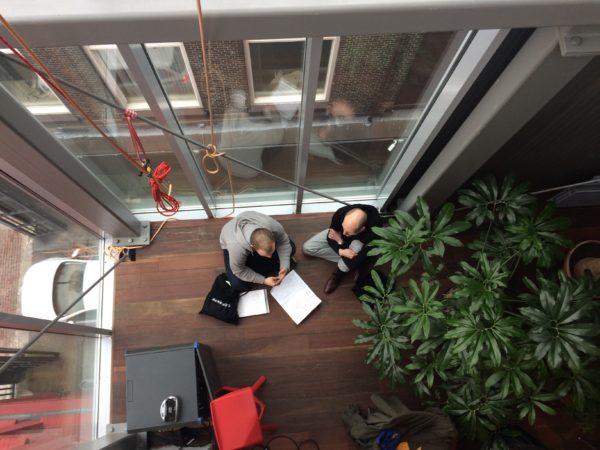
In the days that followed, the group visited a variety of innovative initiatives, which culminated in these eight important lessons:
Lesson 1: A powerful story is stronger than numbers and statistics
Where Maaike Goslinga, international editor at De Correspondent, spoke about ‘walking the talk’, Sarah Schützle from Verhalenhuis Belvédère (In English: Storyhouse Belvédère) was telling us about reaching full inclusivity, also referring to people that are generally hard to reach. For De Correspondent this means advocating their vision and ideals++De CorrespondentDe Correspondent has made critical remarks to the far too extensive influence multinationals like Google have in our society and so stopped using Google Analytics. Instead of using this service, they had to invest in a more expensive tool. They believe you can only be credible when you put your own vision into action. in everything they do and for Belvédère ringing doorbells for a cup of coffee at people’s homes so they get in touch and have a unique chance to hear people’s stories.
Lesson 2: The best tools you have are your hands, head and heart
On day three of the excursion, we visited citymakers like NoLIMIT in Amsterdam south-east. NoLIMIT has been stimulating talent development in youth within the music industry, with the ultimate goal of helping them to get a job within the cultural sector. Initiator Angelo Bromet++Angelo BrometHe has been working in this field for over a decade and is linked to KL’s project Amsterdammers, Maak je Stad! as a member of the advisory committee. emphasised that using your heart is paramount when working in social innovation. According to Angelo, it’s not the knowledge you possess that determines whether an initiative succeeds or fails, but the passion you have for the project.It’s not the knowledge you possess that determines whether an initiative succeeds or fails, but the passion you have for the project. NoLIMIT works with people from a diverse cultural background, and people with a form of disability are more than welcome. The Finnish group admired Angelo’s ownership for his work and the measure of inclusivity and impact he has been able to achieve by doing what he loves.
Lesson 3: Take your time for development and be flexible
Jonna Klijnsma from Takecarebnb encouraged the Finnish group to ‘just’ start working. Whether this will be easy is a different question, it’s particularly important to take the leap from thinking to doing.It’s particularly important to take the leap from thinking to doing. Thami Schweichler from Makers Unite confirmed this, and added that it’s essential to give an initiative sufficient time to develop. He stated that you can’t predict whether a project will work, so starting and learning along the way makes more sense. Mark Slegers, co-initiator of Bluecity and Rotterzwam, gives us the exact same advice in Rotterdam the next day. Mark has a background in the energy industry, where he saw innovative plans gathering dust in bureaucracy. By constantly having to wait for approval, plans were already outdated before they could be executed. As a result of that, Mark Slegers stopped planning so he is more flexible to adapt to and make use of new developments.
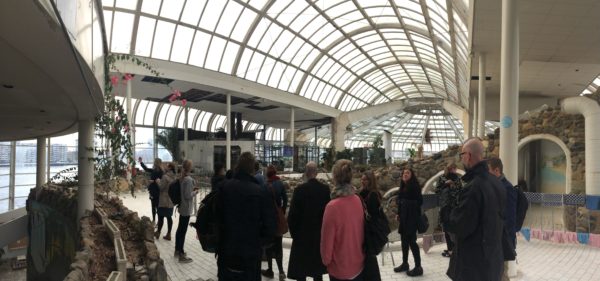
Lesson 4: Understand and engage your target group
In a world where almost everyone is an expert in something, knowledge and objectivity are becoming more dynamic concepts.In a world where almost everyone is an expert in something, knowledge and objectivity are becoming more dynamic concepts. Maaike from De Correspondent stated: “We’re all biased, so let’s be open about it”. De Correspondent++Light your fireLight your fire: The mission of De Correspondent clearly caught on with the participants. One summarised: “You can skim the [traditional] newspaper and light your fire with it, and not be more enlightened than before.” Would you like to know more about the citymakers that visited us? Continue reading here. tries to adapt to this by, in contradiction to traditional news media practice, engaging and interacting with her readers. By getting to know their target group better and making better use of their knowledge, they want to renew news. For them, news should be more about learning from each other than simply consuming and being entertained. By including readers into the making process of De Correspondent, they are creating a much more valuable whole. An example for this is the series they made about pornography and dementia++InteractionDe Correspondent regularly calls on her readers to talk, think and write with them. Through this, they learn from their readers about topics they can later share about. Two examples of these calls are for people that want to tell something about pornography and dementia.. This alternative way of looking at and engaging with your target group, in a fairly traditional industry, was very innovative for the group.
Lesson 5: Don’t pay too much attention to rules and laws
In Rotterdam we visited Leeszaal West. Co-initiator Maurice Specht told us about the beginning of the Leeszaal (in English: reading room) that functions as a public space and library, where books don’t have to be registered++Library without rulesRecording books is not required at the Leeszaal. This way, people can easily take and donate books while at the same time avoiding a complicated and inefficient system.. He advised the Finnish citymakers to not simply conform to existing rules and legislations. According to Maurice, they exist to be modified. In order to get a socially innovative project – like the Leeszaal – running, existing legislation often has to be altered. As was apparent during this excursion, rules and regulations play an important part in both Dutch and Finnish society. However, many of the participants realised that they often tend to see more obstacles than necessary. Maurice Specht and others during the excursion, have all pointed out that rules and legislation don’t always have to be a limitation. When you understand the system you’re working in better, this can also lead to opportunities.Rules and legislation don’t always have to be a limitation and better understanding of the system can also lead to opportunities. Even this seemingly rigid system can evolve and improve when necessary. When you start thinking in possibilities, you can also pave the way of opportunity for others.
Lesson 6: Engage volunteers in a dignified way
The importance of this lesson was felt at numerous site-visits. Many Fins noted that volunteers in the Netherlands take part in social initiatives in a professional way. Volunteers often play an important role, especially in some of the initiatives we visited. Leeszaal West for example runs entirely on a group of seventy volunteers. Co-initiator Maurice thereby stresses that you should start with the capacity of volunteers and that you focus on how they can contribute with their unique talents.
Hotspot Hutspot is another initiative where volunteers play a core part. At this restaurant, kids work in the kitchen while learning about food and cooking. They don’t do this because they have to but because they want to, which is a crucial difference. The kids feel satisfied, they like the work and also get a free and healthy meal in return. In this way, initiator Bob Richers++Challenge City of the FutureBob Richers, Wouter Bauman from the DakAkker, which was one of the site visits, and Mark Slegers from Rotterzwam all participated in the Challenge City of the Future, organised in collaboration with Kennisland. Read more on our work in urban innovation here. creates a beautiful and safe place for kids from the neighbourhood to gather and to grow.
The power of volunteers is evident at Verhalenhuis Belvédère in another way: by recognising that there is a place for everyone to contribute. In this way, they create an important central house of the neighbourhood, where everyone feels welcome and valued, and to which the neighbourhood itself contributes actively.
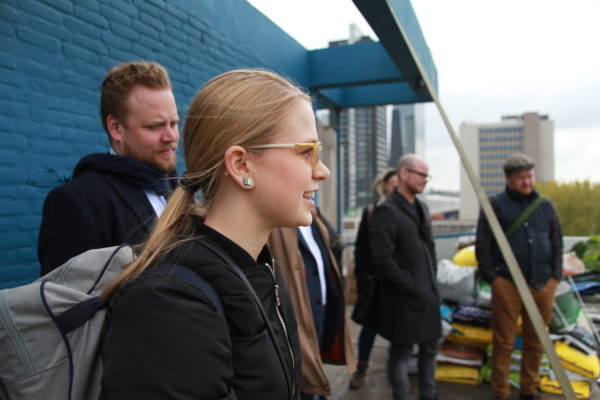
Lesson 7: Watch and learn the context you’re in
It’s of great importance to always realise the context you’re involved in, as a person and as an initiative. At Refugee Company, this lesson is evident. Jay Asad++Jay AsadHe is co-founder of Refugee Company, where he works with Fleur Bakker to create opportunities for refugees to link them with organisations who can use their help. Through working people learn and integrate, besides giving them a sense of purpose. told us about his own background as a refugee and how important it is to do something. When he left Syria, he didn’t only lose his home, he also lost his connection to the job market and his (professional) network. This is what he is trying to capture in Refugee Company, where he is connecting newcomers to the job market. Just waiting while doing nothing is a dangerous trap, according to Jay, and the lack of future prospects can have numerous negative effects on refugees. Because of this, “Let’s just work and think later”“Let’s just work and think later” – Jay Asad has become his motto. He in particular knows how to make the transition to work in Dutch society, and what role rules and legislation play. While this context was unknown to him at first, it has shaped him and also taught him to work differently. How he can work with this system – and not against it – is what he now shares with others. In this way, Jay is offering an interesting bridge between different backgrounds that newcomers have and the Dutch system to which they will have to conform.
Lesson 8: Make strategic use of partners
It’s becoming more and more important to make use of everyone’s skills and talents to further develop and grow as a society. Unique to the Dutch field of social innovation is the way where governments, citizens, knowledge institutions and private corporations work together.Unique to the Dutch field of social innovation is the way where governments, citizens, knowledge institutions and private corporations work together. The initiatives we have visited are often born by virtue of valuable collaborations. The opportunities to learn from each other and grow together are vast, an observation we also made during this excursion when meeting these Finnish visionaries and their promising plans. Through the sharing of knowledge and by helping each other to face our challenges we can achieve so much more than on our own, both on a large scale as on a local level. This realisation returned in the excursion as well, where people from different projects were happy to call on each other’s help to think about their challenges during sessions and visits. While these projects are competing in this challenge, they considered the sharing of knowledge and expertise of greater importance.
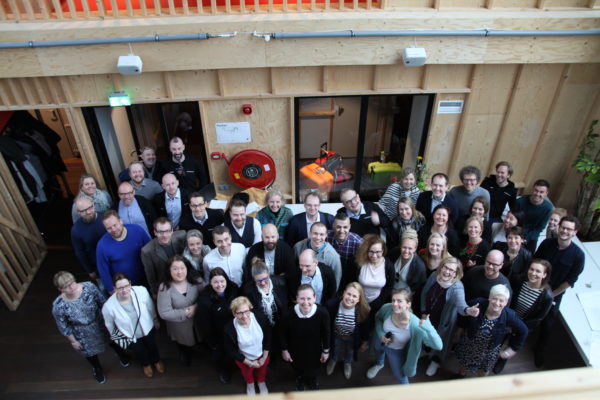
A group full of positive energy on the last day of the excursion.
Maker: Heli Nissinen
Download
This excursion was a great opportunity for Kennisland to bring Dutch social innovation to the fore and contribute to a valuable challenge like the Ratkaisu-100. Besides, we consider it important to develop and expand relations with parties like Sitra. By learning from each other and trying continuously to reframe our own challenges, but also by looking at how others face similar challenges, we grow as an organisation but also as a society.

